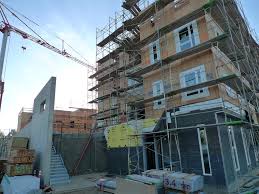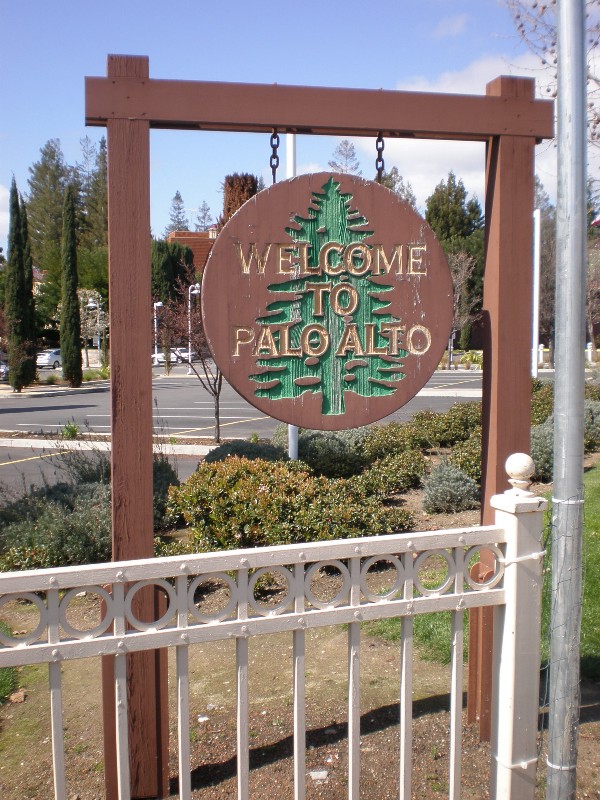Physical Address
304 North Cardinal St.
Dorchester Center, MA 02124
Physical Address
304 North Cardinal St.
Dorchester Center, MA 02124

Economist Nick Rowe at Worthwhile Canadian Initiative has a provocative piece asking whether housing demand curves might actually slope up. He puts his argument in abstract mathematical terms (again, he’s an economist), but the germ of the idea is that “everybody wants to live near everyone else, wherever that happens to be.” Our decisions about where to live are dependent on what everyone else decides to do. If you move from the countryside to the city, I get more out of moving to the city, too. And vice versa. Our decisions mutually reinforce each other. Rowe assumes that these decisions not only reinforce each other but are “strong strategic complements,” which means roughly that they generate positive feedback. We can think of it in probabilistic terms: if my probability of moving from the countryside to the city is conditioned on your probability of moving, then our decisions are “strong strategic complements” if a 10% increase in your chance of moving increases my chance of moving by morethan 10% (and vice versa). That’s not a completely arbitrary assumption: if you and I live in the countryside, your decision to move not only makes the city a more desirable place (because it now has more people) but it makes the countryside less desirable (it is now a bit lonelier). That is, when you raise your probability of moving, you not only increase my chances of being stranded, you make the consequences of my being stranded more dire. I adjust my probability by ratcheting it up even more. This positive feedback will cause people to continue pouring in from the countryside into the city, at least over some range of population. (Overcrowding, congestion and so forth will dampen the feedback at some point.) Within this population range, increasing the amount of housing further increases the demand for housing. But if the […]

If you restrict the supply of housing, other things equal, what will happen to the price? That’s not a trick question. Any competent Econ 101 student would answer correctly that the price will rise. One reporter for the Washington Post gets it. In a hopeful sign of spreading economic literacy, Emily Badger writes: In tight markets, poor and middle-class households are forced to compete with each other for scarce homes. And so new market-rate housing eases that competition, even if the poor aren’t the ones living in it. Over time, new housing also filters down to the more affordable supply, because housing becomes less desirable as it ages. That means the luxury housing we’re building today will contribute to the middle-class supply 30 years from now; it means today’s middle-class housing was luxury housing 30 years ago. Typical critics of soaring housing prices have a much harder time grasping this. They don’t see that zoning rules and restrictions meant to make urban life more “livable” (often for the well-established homeowner) reduce supply and put strong upward pressure on prices. Minimum lot sizes, maximum density restrictions, minimum parking requirements, and so on all contribute to reducing the supply. And it raises prices not only for the wealthy, but also for middle- and lower- income families, as well. Instead, they think that new construction of market-rate housing is somehow the source of the problem, rather than a solution. (Emily Washington and I recently published a useful summary of the literature on the regressive effects of land-use regulation.) Ever wonder how ordinary people could afford to live in major cities before there were rent controls and land-use regulations? Builders built wherever it was the most profitable. The middle-incomers didn’t have to compete with the wealthy for middle-income housing, and the poor then didn’t have to compete with the middle-incomers for low-priced […]

This piece was coauthored by Nolan Gray and Katarina Hall. It’s like Los Angeles, but worse. To many, that’s the mental image of Mexico City: a city of unending traffic, unbearable smog, and unrestrained horizontal expansion. Yet when one walks the streets of Mexico City, a distinct reality comes into view: a city of wide sidewalks and integrated bike lanes, lush parks and cool street tree canopies, and dense, mixed-use urban neighborhoods. As a matter of fact, nearly every neighborhood within Mexico City’s giant ring road—the Circuito Interior—has a walkscore above 95. Many major U.S. cities lack even one neighborhood with such a high score. Even on the outer fringe of Mexico’s sprawling Distrito Federal, neighborhoods often have walkscores upwards of 70, qualifying as “very walkable.” What makes Mexico City so walkable? The first thing an American might notice about Mexico City is just how busy the city’s sidewalks are. It’s a city of 21,339,781, and it shows. But this busyness isn’t a mere side-effect of size; it’s a natural result of the city’s generous sidewalks and high-quality pedestrian infrastructure. Many downtown roads host spacious sidewalks, accommodating an unending sidewalk ballet of commuters, tourists, and street vendors. Wide medians along major boulevards offer both refuge for crossing pedestrians and a public space in which people are encouraged to meet and relax. Many of the city’s busiest downtown areas have been closed to automobile traffic. Mexico City’s main road—Paseo de la Reforma—is reserved on Sundays for pedestrians and cyclists. “Jaywalking” is normal and in many cases is assisted by traffic police—a stark contrast to the near persecution pedestrians often face in U.S. cities. The ample space for pedestrians attracts not only foot traffic but also the people watchers who come to enjoy the vitality, in turn keeping many downtown […]

Co-authored by Tony Albert and Jeff Fong SF Curbed recently sat down with Patrick Burt, Mayor of Palo Alto, to get his response to the high profile resignation of Kate Vershov Downing. Downing, of course, was the Palo Alto Planning Commissioner who publicly announced that she will move her family from the city because of high housing prices. Mayor Burt’s response illustrates a complete failure to accept either the nature or the cause of our housing crisis. And were we not so desensitized to this type of thinking here in the Bay Area, it would be hard to distinguish his comments from satire. Too Many…Jobs? Mayor Burt’s first, and perhaps most bizarre, assertion is that Palo Alto’s problem is job growth—both within the city as well as within its Peninsula neighbors. And that part of the solution must be to slow down or displace new job creation. Take a minute and let that sink in. An elected government official is calling out job growth as a problem, and advocating for policies to slow it down. Mayor Burt says that… we’re in a region that’s had extremely high job growth at a rate that is just not sustainable if we’re going to keep [Palo Alto] similar to what it’s been historically. Of course we know that the community is going to evolve. But we don’t want it to be a radical departure. We don’t want to turn into Manhattan. Job growth increases housing demand, and if housing supply increases more slowly than housing demand, housing prices rise to make up the difference. Mayor Burt is willing to admit that housing prices are too high, but actively rejects the idea that Palo Alto needs to significantly intensify land use with town homes or multi-family apartments. This leaves him backed into the absurd corner of addressing […]

1. This week at Market Urbanism Episode 1 of the Market Urbanism podcast came out this week. Nolan Gray plans to release new episodes bi-weekly. The RSS feed is http://feeds.soundcloud.com/users/soundcloud:users:236686274/sounds.rss You can currently find the podcast on Soundcloud and PlayerFM. It will be available within the next few days on iTunes, Stitcher, and TuneIn. If there are other podcasting services you would like me to plug the RSS feed into, please let me know in the comment section below. Cities And The Growth Of Our Collective Brain by Emily Hamilton Sandy Ikeda describes the entrepreneur’s environment as the “action space.” Today, an action space could be in a suburban home for an entrepreneur who creates a digital product that’s sold online. While action space doesn’t necessarily need to be a place of high density, this face-to-face element remains a key part of the world’s most productive action spaces. Economist Sandy Ikeda, a previous MU contributor, is back. Here’s the first of what will be weekly content, published every Tuesday at 10am eastern standard time–How The Housing Market Works In other words, it’s not the entrepreneurs, developers, architects, and construction companies that build very expensive housing in cities like New York that drives up housing prices! Indeed, those people are responding to what they believe buyers are willing to pay, and if they are prevented from building those units the result will be higher prices for everybody. And if you observe housing prices rise despite increasing supply, that probably indicates demand is currently increasing faster than supply. Prices, however, would have been even higher were the government to undertake policies that restricted supply. 2. Where’s Scott? Scott Beyer is spending his last night tomorrow in Austin. Then he’ll spend a couple days in San Antonio, before leaving Texas. His Forbes article this week […]

Phew! It’s finally here. After spending a good chunk of my summer researching podcasting, reaching out to potential guests, and recording my first few episodes, I am excited to announce the launch of the Market Urbanism Podcast. You can currently find the podcast on Soundcloud and PlayerFM. It will be available within the next few days on iTunes, Stitcher, and TuneIn. If there are other podcasting services you would like me to plug the RSS feed into, please let me know in the comment section below. Below, you can find a transcript. Given the amount of extra time it takes to transcribe the typical 30 minute episode, this probably won’t be a regular occurrence. That said, if anyone is interested in taking up this job, and getting some credit as an official member of the Market Urbanism Podcast team, message me on Twitter at @mnolangray. Stay tuned next week for a discussion with Emily Hamilton on the relationship between land-use regulation and housing affordability. Enjoy the show! Welcome to the Market Urbanism podcast, where we’re liberalizing cities from the bottom up. I’m your host Nolan Gray, a writer for Market Urbanism and a graduate student in urban planning. In this first episode I’d like to welcome you to the podcast by answering three questions you’re probably already asking yourself: First, what market urbanism? To give you the short answer, market urbanism is the synthesis of classical liberal thought with urban planning and policy. On the market side of the term, we place a lot of value on empowering individuals, recognizing the importance of economic liberty, and celebrating the complex spontaneous orders that organize human life. On the urbanism side of the term, to put it simply, we love cities. We’re interested in understanding what makes for bustling streets, healthy neighborhoods, and prosperous […]

[Editors note: Sandy Ikeda was an original Market Urbanism writer and is now a regular columnist for the Foundation for Economic Education, or FEE.org. FEE has offered republishing rights, so Sandy’s past work will be appearing here every Tuesday at 10am eastern time] People sometimes argue that we need substantial housing subsidies in some very expensive cities because “the cost of building new housing is greater than what most people can afford.” It’s certainly true that families earning low or moderate incomes have a hard time buying or renting brand-new housing. But that’s not only the case today; it’s been true throughout the history of civilization, from Uruk to New York. The ABCs of Housing The housing market is subject to the same forces of supply and demand as any other market, although of course there are things that distinguish it from, say, the market for fast-food. For instance, unlike a hamburger, a house is durable: it’s not consumed all at once. It also depreciates: the average house in the United States, for example, has a useful life of about forty to sixty years before major renovations become necessary. Let’s say there are 3 categories of housing – A, luxury housing; B, middle-income housing; and C, low-income housing – and that houses are continuously built, age, and wear down. In the real world there are of course many more than 3 categories but let’s assume for simplicity that there are only these three. Now, this is very much like the market for automobiles, which are also durable. In the new-car market you have at the high-end the Mercedes S-Class Sedan, while at the low-end the Ford Fiesta, and in the middle there’s the Honda Accord. And within each category there’s an array of prices depending on initial quality, age, and […]

In his famous 2010 Ted Talk Matt Ridley points out that a growing human population has facilitated increasing standards of living because more people means a faster growth rate of innovation. He explains that humans’ propensity to exchange means that as a society we all benefit from each other’s ideas. No single person knows how to make a pencil from scratch, but we can all benefit from pencils (and much more complex tools) because collectively we have the knowledge to produce them. Ridley describes technological progress as a product of the collective brain — the space where our “ideas have sex.” Ideas “meet and mate” perhaps most obviously on the Internet, where the best encyclopedia in human history is crowd-sourced. This process is constant in the analog world also. The story of Microplane — a company that went from making printer parts, to woodworking tools, to kitchen gadgets and instruments for orthopedic surgeons — illustrates the innovations that come from ideas meeting and mating across entirely different industries. Cities provide the ideal location for these meetings because they bring together people from varied industries, backgrounds, and priorities. In The Death and Life of Great American Cities, Jane Jacobs identifies four qualities that are necessary for diverse neighborhoods: At least two primary land uses; Small blocks; Buildings of diverse ages and types; and A high density of buildings and people. These characteristics facilitate an urban environment in which people of different professions, interests and income levels come into contact with one another as they go about their daily routines. In turn, this human contact puts people in an ideal position for innovation and entrepreneurship. Sandy Ikeda describes the entrepreneur’s environment as the “action space.” Today, an action space could be in a suburban home for an entrepreneur who creates a digital product that’s sold online. While […]

1. This week at Market Urbanism Buses and Trains: The Turtle and the Hare? by Asher Meyers With buses a relatively safe, cheap and green form of travel, the wisdom of the government favoring trains at great public expense is dubious. This isn’t to say that trains are bad and buses are good—to each his own. But given the trade-offs involved, buses cannot be dismissed as inferior and obsolete—in the real world, budgets are limited and prices matter, so a small sacrifice of time and comfort is worth the savings. Parking Requirements Increase Traffic And Rents. Let’s Abolish Them. by Brent Gaisford Let’s get rid of parking minimums and allow new apartments to be built either without parking, or the reduced amount of parking preferred by developers. People without parking are less likely to drive, and less driving means less traffic. Plus, we’ll be one step closer to reducing our stratospheric rents. 2. Where’s Scott? Scott Beyer is in Austin. His two Forbes articles this week were about how Washington, DC’s Zoning Regulations Target ‘Fast Casual’ Restaurants and Tokyo’s Affordable Housing Strategy: Build, Build, Build The city had 142,417 housing starts in 2014, which was “more than the 83,657 housing permits issued in the state of California (population 38.7m), or the 137,010 houses started in the entire country of England (population 54.3m).” Compare this with the roughly 20,000 new residential units approved annually in New York City, the 23,500 units started in Los Angeles County, and the measly 5,000 homes constructed in 2015 throughout the entire Bay Area. Scott’s previous article on Austin’s rail transit, already well-cited by local media, got additional coverage in the American Spectator. 3. At the Market Urbanism Facebook Group: Adam Hengels on Stark Truth Radio with Robert Stark Ahmed Shaker posted videos of pedestrian and street traffic in […]

Everybody in LA can agree on one thing – traffic blows hard. Harder, even, than these guys: Hate traffic? Blame parking. But here’s a secret: people don’t cause traffic. Cars do. And you know what makes people use cars? Parking. If you’ve got nowhere to put your car when you arrive, you aren’t going to drive, and you aren’t going to contribute to traffic. Research has shown that for every 10% increase in parking, 7.7% more people commute with a car. Hate high rent? Blame parking. That’s a bad start. But it gets worse. Parking is also driving up your rent. Building parking spaces is incredibly expensive – each underground parking spot in LA costs about $35,000. Even if your unit includes “free” parking, you’re paying for the cost of that parking in your rent every month, whether you want to or not. Parking is cheaper to build above ground (if you can call $27,000 cheap), but then it takes up valuable space for apartments. All those dollar signs have an impact–UCLA professor Donald Shoup has calculated that requiring parking reduces the number of units in new apartment buildings by 13%. But parking is even more insidious than that. Often, when a new housing project is proposed, one of the first things that angry people (NIMBYs) yell about is traffic. Sometimes, those NIMBYs successfully stop housing from being built, and we desperately need all the housing we can get to contain our skyrocketing rents. Then why the hell do we require all new buildings to include so much parking? You’d think, then, that developers might stop providing parking. But they can’t, because we did something really, really dumb. We’ve created a system that requires parking to be provided with all new projects. For an apartment […]